DEVELOPMENT UPDATE - #1
INTRODUCTION
Welcome back everyone. Here's a quick update on what's been happening with BIP in the past few weeks. I'd like to quickly start out by officially welcoming Cornelius Crispus to the project. This is no longer a one man show! Cornelius Crispus is a student of history and will work on BIP as its chief lorewriter. I point him in a direction and he creates great stories and events out of the ether. If you keep reading, you will be able to see some of his work so far. So without further ado, let's get into some of the details.
WORK DONE SO FAR
Confirmed Features
- Rework all major faction troop trees - 90% complete. Villagers and caravan guards remain for vanilla factions.
- Create troop trees and troops for all new cultures - 60% complete. Subuwari still needs an expanded infantry selection. Aneans need a complete noble troop tree. All new cultures need new villagers, townspeople, notables, caravan guards and other generic NPCs.
- Rework lord equipment - First pass done. Second pass probably needed. No change.
- Rework all vanilla mercenary faction units - 100% complete.
- Rework any wonky vanilla weapons - 70% complete. Still need to revise most noble/elite swords.
- All the new lords and clans and kingdoms. Mapped out but not started. No change.
- All the new cities and castles. Mapped out but not started. No change.
- Rework all bandit troops - 100% Complete.
- Implement all planned mercenary factions - 60% Complete. White Scarabs done. Troop trees done for about half and general style and type mapped out for all.
- Re-sculpt any dumb looking lords and all midget male imperial lords - Started but not finished. Should be easy though. No change.
- Address the tournament and arena equipment in some capacity - Removal of ranged weapons planned. Possibly mounts too. Unsure at this stage, just know it needs looking at. No change.
- Rework facegen for all cultures. - 10% complete. I know what to do with this now, just need to do it.
- Implement new bandit types for new cultures that need them - 70% complete. Samek Tribesmen, Mabili Wildmen, Durkhan Rouge Riders and Illovani Renegades all done. Higher tier Subuwari bandit type still left.
- Fix Pricing mechanisms - 2% complete. I think I know how this works now and will see about going through the pricing of MOST items. Note that this will take time and multiple iterations most likely.
- Lore for the Eorlings and their King, Dúnhere - 99% complete. See below. May have some revisions/tweaks in the future.
- Lore for the, now 2, Durkhan factions and their respective leaders - 99% complete. See below. May have some revisions/tweaks in the future.
- Design and kit out new faction leaders - 20% complete. Both Durkhuns finished. Grand-Archon Daemos finished. King Dúnhere finished.
New Minor/Mercenary Factions List, a First Draft
Below is a quick rundown of the new mercenary and minor factions we have planned at present and a quick blurb about who they are and what they're about. Do note that this list is likely to expand.
Imperial
The Illovani Clans - Troop Tree Finished. Lords remaining.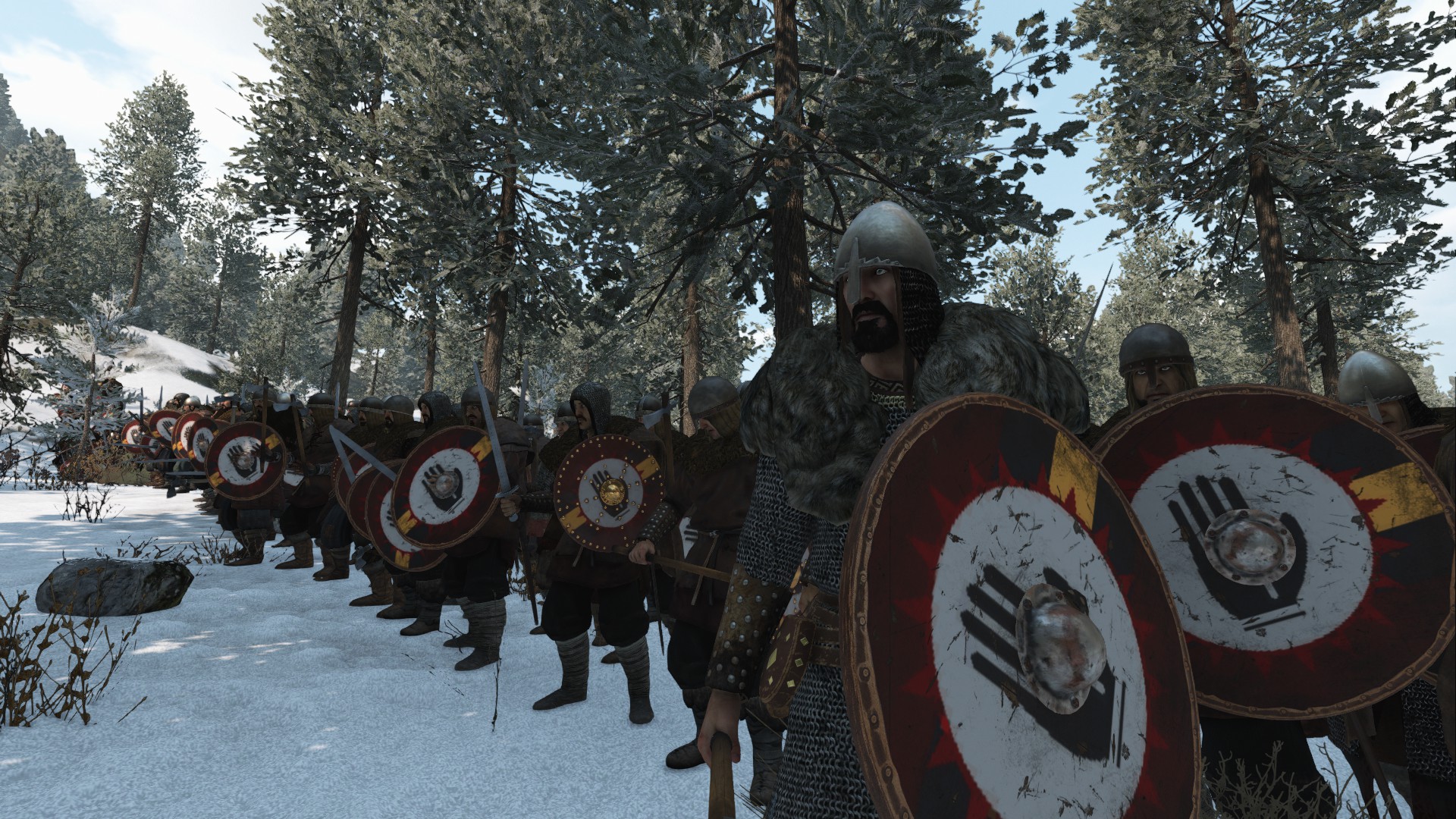
A rugged people of the mountains in the northern empire, these people trace their ancestry back to a time before the empire and have a long history of warring with each other in ancient feuds. They will appear in 3 separate clans, each acting as its own mercenary faction. Names are TBD.
Dino's Desert Dogs - Troop Tree Finished. Lords remaining.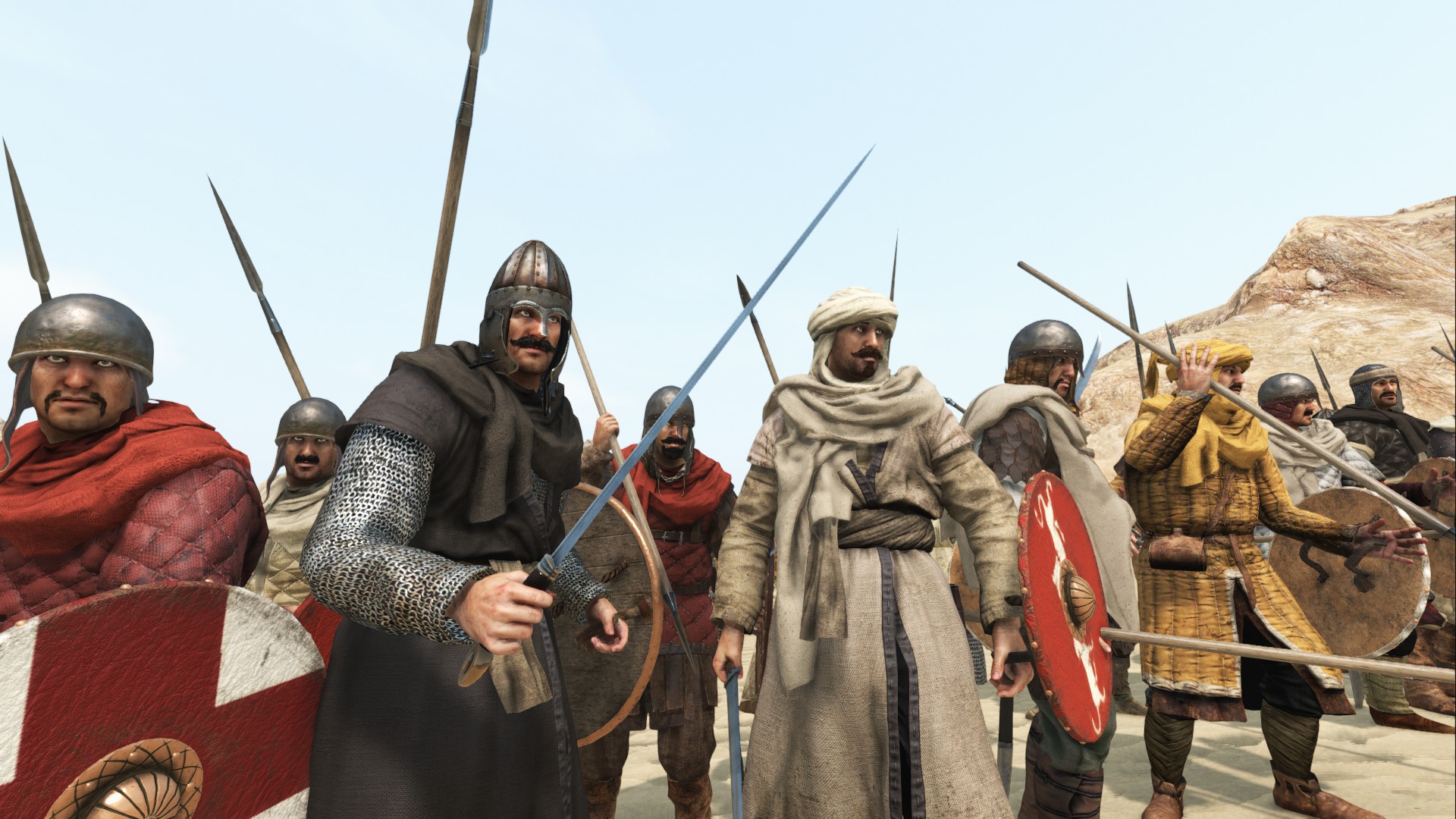
Dinostetos was an officer in the imperial army and a renowned war hero, known for his martial prowess and bravery. A man who lead from the front, he was looked at as the golden standard of commanders by the soldiery. Following a crushing defeat of the southern imperial army at the hands of the Aserai, Dinostetos formed a strong resentment of their southern neighbors after years of losing brothers in arms to them. He grew disenfranchised with the Empire and broke off with a company of loyal men to fight a fulltime guerrilla war with the Aserai. To sustain these efforts, he also lends his services to rulers who are willing to pay. The Desert Dogs fight as formideable light to medium infantry and cavalry and consists mostly of seasoned and fast moving warriors.
The Order of the Alpha and Omega - Troop Tree Finished. Lords remaining.
The prestigious and reclusive Order of the Alpha and Omega is an organisation of imperial noblemen with idealistic ideas of a strong Empire, united for the good of all. They form such a formidable force of heavy cataphracts on the field and fight with fierce martial prowess to the point of receiving donations from rich citizens of the Empire to "continue their good work". In fact, amongst wealthy socialite circles, it's become fashionable and point of flaunting how much you've contributed, leading to the Order virtually rolling in funds. Not to speak of their hiring fee, which is exorbitant at best.
The Kazaltit Horsemen - Troop Tree Finished. Lords remaining.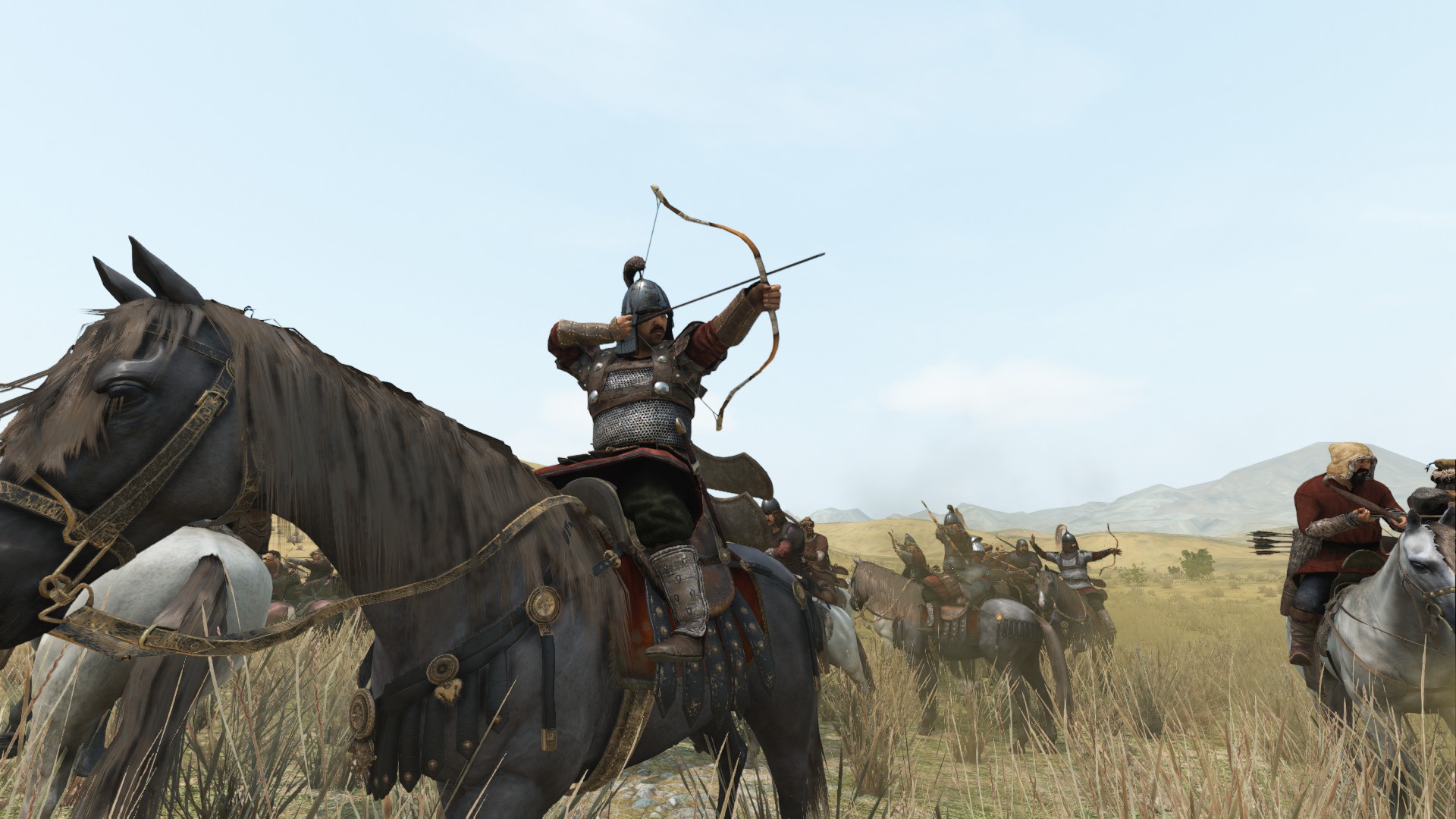
The Kazaltit Horsemen are an auxiliary force of Khuzait people residing in the area where the southern Empire borders the Khuzait steppe. They fight as horse archers as their own people have for ages, but on strong imperial steeds, in imperial armor, with imperial weapons, funded by imperial gold and often under imperial command. They make their fortunes in the many wars of the now fractured Empire and not always on their side.
Aserai
The White Scarabs - Troop Tree Finished. Lords remaining.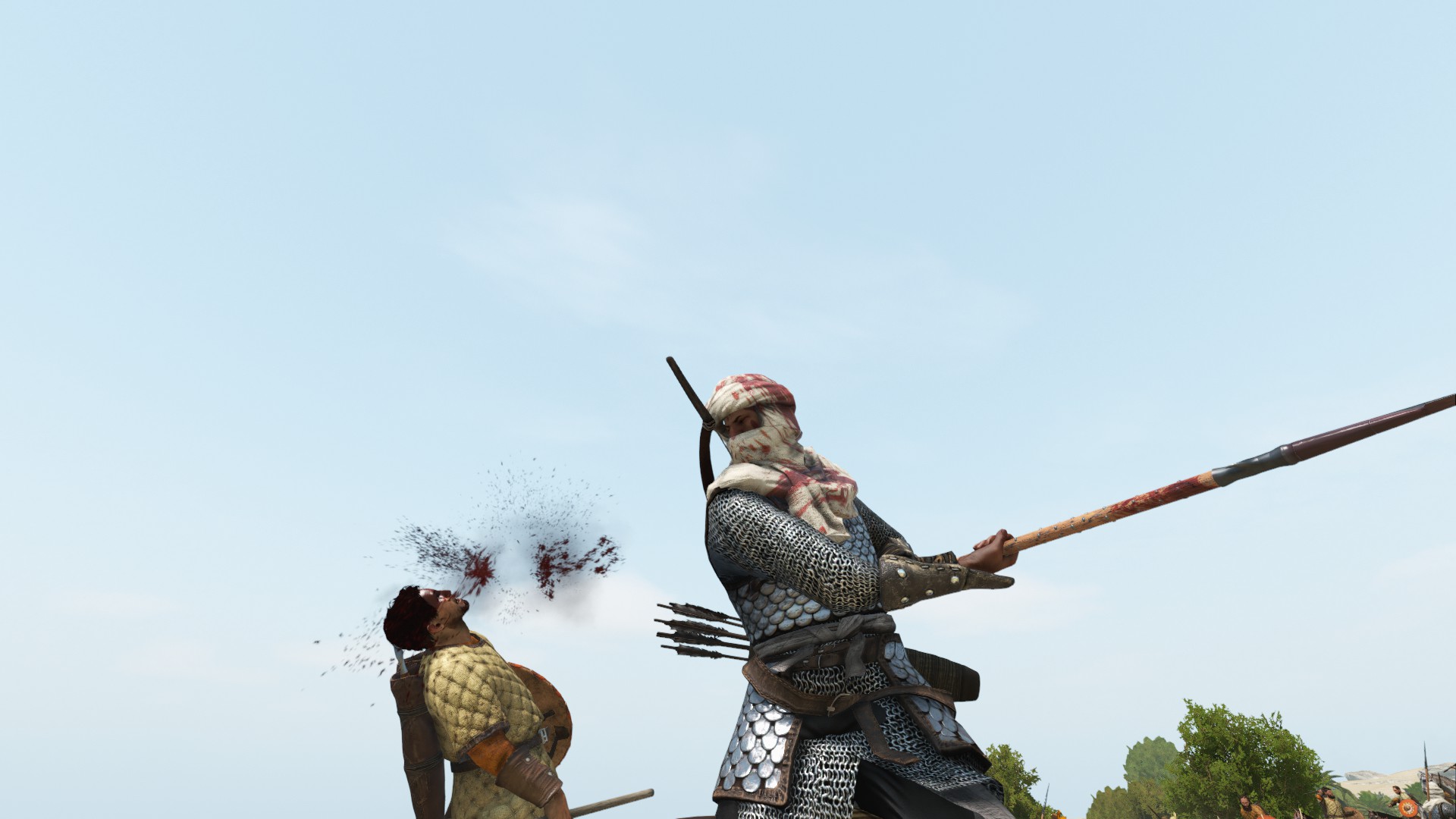
The famous White Scarabs form an order of elite footmen. Each individual Scarab is a free man and independent mercenary but has an ultimate loyalty to his order. The Order of the White Scarabs takes its recruits from orphaned boys under the age of 10 and train them in all forms of combat, philosophy and literature. At their coming of age, each Scarab is a warrior poet in his own right and given the standard panoply of scale armor, Mandible staff and bow.
The Slave Masters of Askar - Concepted. Not started.
The Slave Masters of Askar will provide a service. A service with a demand. If the Ghilman warrior-slaves are quality, the slaves of the Slave Masters of Askar are quantity. They will offer bulk batches of men, and some women, who are down in the dumps of life in every way as cannon fodder and as a means of overwhelming the enemy. Their slave troops will come cheap, both in terms of their monetary cost but also in the respect given to their lives.
Battania
The fen Balin Mercenary Company - Troop Tree Finished. Lords remaining.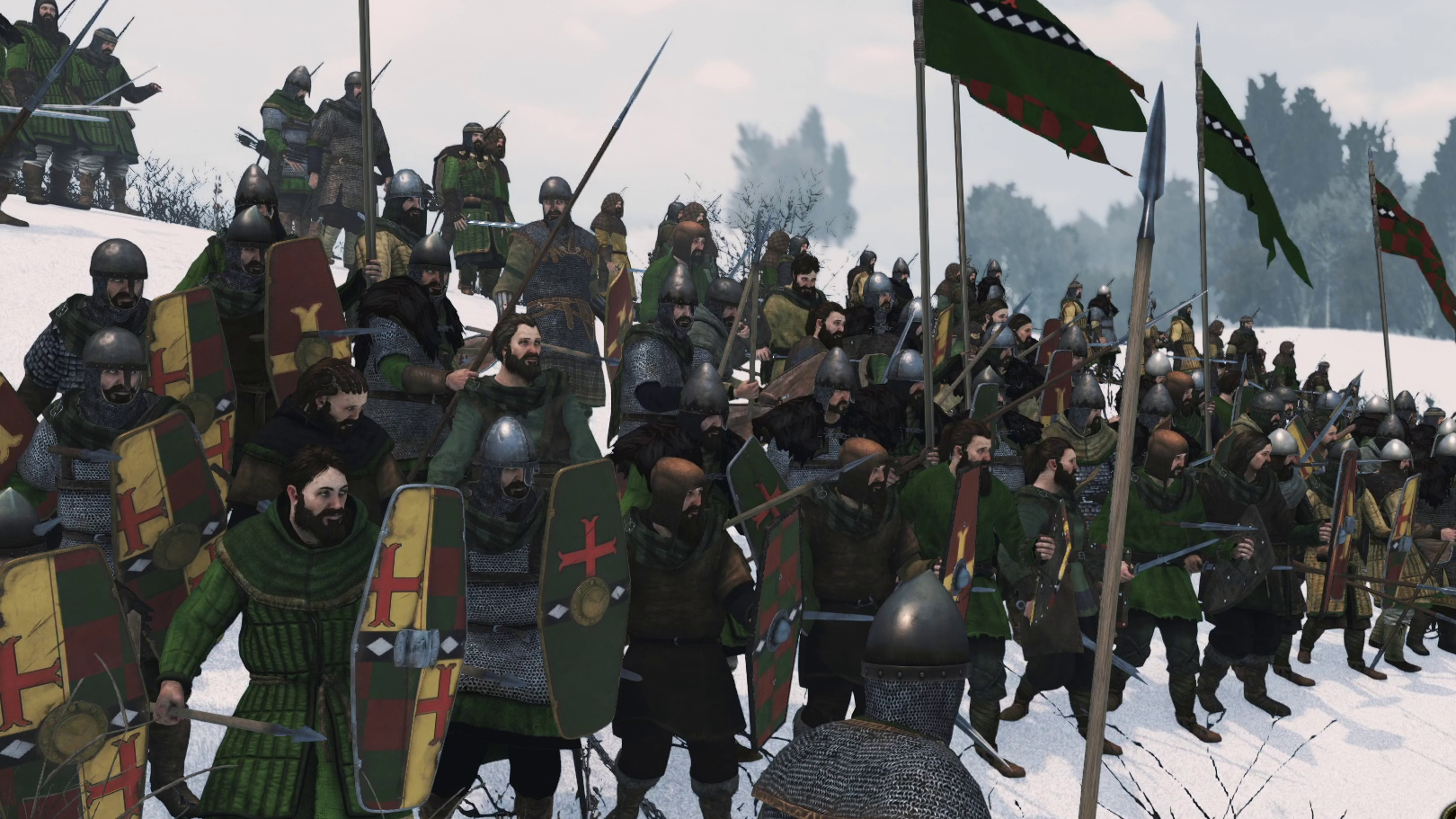
The clans of Battania, whilst all independent and prideful in their own way, are nothing like fen Balin. Fen Balin declared themselves utterly uninterested in the goings on and politicking of the Battanian highlands and abandoned all holding in pursuit of glory, gold and fame. They fight as brawn for hire all across Calradia, to anyone who will pay and have indeed achieved much of what they set out to do. Their competency on the field is undeniable, but they have spent the last 50 years in and out of open conflict with various Battanian clans and are not looked upon kindly in their homeland.
The Bastards of Basilech - Concepted. Not started.
The Battanian highlanders are known to be a hardy folk, on and off the fields of battle. The Bastards of Basilech are no exception. In fact, they may be the hardest bunch of axes for hire in all of Battania. Often found bloodying themselves against Wolfskins, there's no shortage of martial experience to go on top of their hardiness. To the rest of Calradia, while all Battanians are looked upon as savage and fierce, the Bastards of Basilech have burst on the scene of war recently and made themselves known as the fiercest and some of the most sought after mercenaries by outsiders.
Vlandia
The Basilisk Knights - Concepted. Not Started.
The Basilisk Knights are a band of knights from the south, in the Valeric Kingdom. Many of them have Imperial friends and Anean cousins as the region is a melting pot for these three cultures. All of them have served in military forces in the region in some capacity, with many acting as caravan guards going across the strait to and from the lands of the Aserai. Others worked as bodyguards for merchant kings in the ports of Terrenia. All of them wanted something more glorious, however and when Malbert the One-Eye gathered his own rag-tag bunch of men, donned a Basilisk emblem on his shield and declared them the Basilisk Knights, many came to his banner. Now they serve as horsemen-for-hire to anyone who will pay them. And though the risk may be greater in this line of work than before, so are the rewards.
Vezhigir
The Kezhevian Tribes - Troop tree finished. Lords remaining.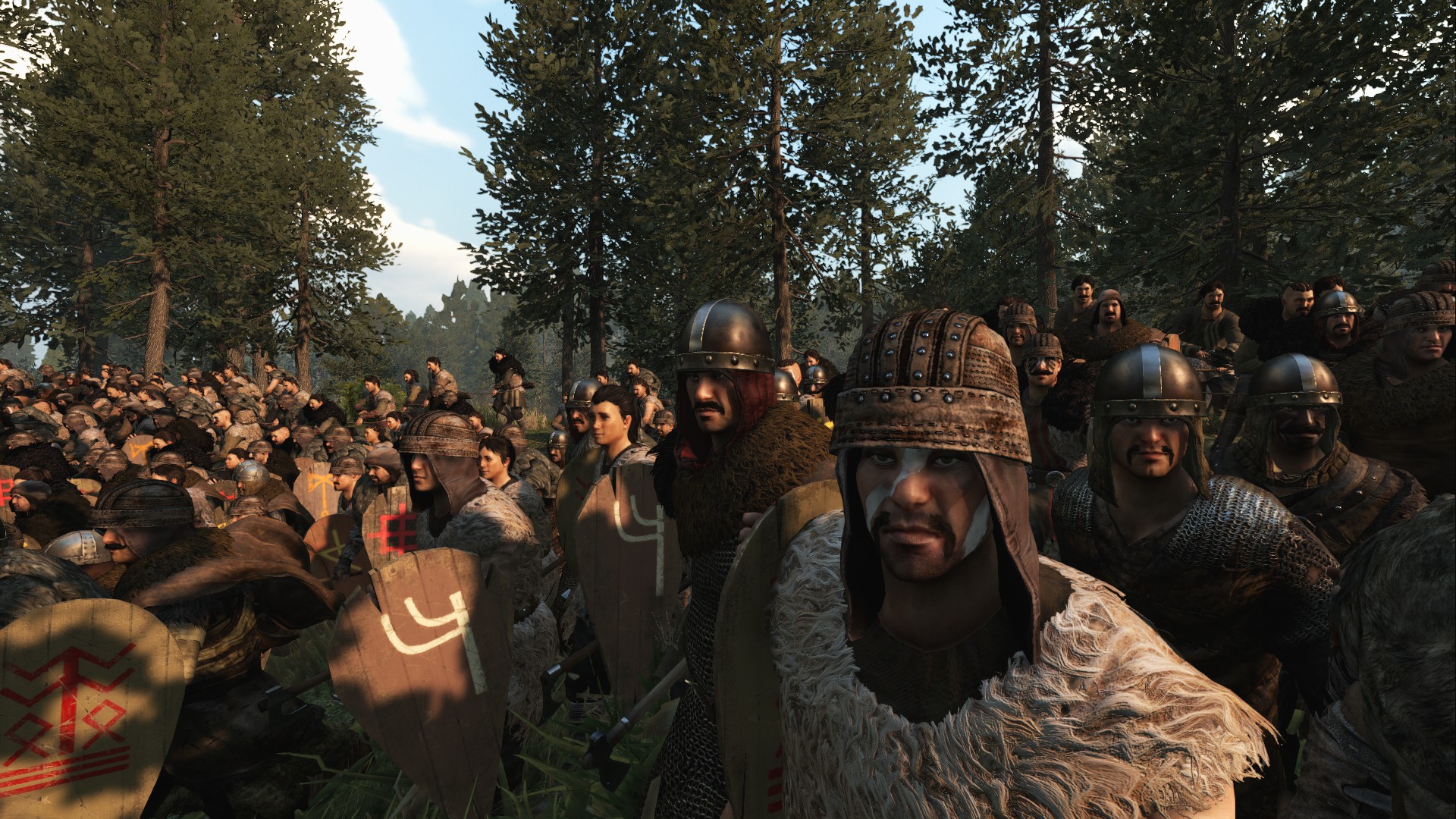
The Kezhevians were originally a Vezhigir tribe like any other but as the others were increasingly confederated and consolidated into the single banner that is now the Vezhigir Kingdom, the Kezhevians were left behind. They were always considered too primitive and too unruly. And rightly so. Now they continue their refusal to civilize by doing what they've always done; raid. Except now, as a means of maintaining sovereignty over themselves, they do it for gold. Gold from anyone who will give it in exchange for their axes.
LORE
Below you will get a taste of some of the lore created by Cornelius Crispus. Him and I created the lore cooperatively, but the overwhelming bulk of the work was done by him based on my ideas, so much credit to him.
The Eorling Kingdom
SYNOPSIS
Three centuries ago, Eorl united the clansmen of the Battanian lowlands and founded a new kingdom. His people, then known as the Eorlings, would fiercely safeguard their independence from their Battanian, Sturgian and Vlandian neighbours, making use of their mastery of mounted combat. Successive kings would lead the Eorling horselords into battle, even as their internal unity slowly eroded. In recent times, king Grendal of house Dunmod usurped the throne from the heirs of Eorl through civil war. He unified his people through blood and fear. Some even say that when the Paliski and Norse invaded, they were invited by some disgruntled Eorl nobles. The invasion was repelled, but Grendal died at the battle of Nevyansk. Young Dunhere of house Eorl was crowned soon after as one of the survivors. He has since then embarked on a series of conquests and internal reforms in order to stabilise the Eorling Kingdom and heal old wounds.
FULL LORE
Three centuries ago, Eorl the Mighty became the first king of the Eorlings. He united the horse riders of the northern lowlands of Calradia, who were under constant threat from the nearby Sturgian, Vlandian and Battanian kingdoms. Indeed, even though the Eorlings could trace their lineage back to the Highlanders, centuries of warfare had left the Eorlings their own cultural identity, which meant that to the warlike battanians their erstwhile kinsmen were now also a target for their raids. Eorl was born of a minor noble who held a small tract of land near Pendraic. When he came of age, he led his own retinue of horsemen into battle, ending the raids from the nearby Battanians on his ancestral lands. When later a rival clan, the Helmings of Caleus, were beset by a Vlandian noble, he rallied his own and allied clans to their defence. At the battle of Caleus, Eorl led a coalition of Lowlanders against the Vlandian invaders. Using his Horse archers, he was able to draw the Vlandian cavalry out of position, at which point his own cavalry encircled and routed them. The Vlandian infantry, seeing their own horsemen dispersed, routed and were soon run down by the reinforcing Helmings. After the battle, Eorl offered his own share of the loot as weregild to the Helming chief, as reparation for past wrongs done by his clan. The Helmings, taken by surprise, threw their lot in with Eorl’s folk and swore them eternal friendship.
Soon enough, even the house of Althain and Dunmod supported the young man, who urged the Horselords of the Lowlands to unite and take control of their destiny. At the ancient druid circle at Aldurn, he was crowned King of the Eorlings, for they had become his folk, truly. His first act was to build a city around the holy site upon which he was crowned, declaring it a refuge for his people. To the current day, Aldurn has become a hub for trade passing between the Sturgian, Battanian and Vlandian lands. Subsequent kings became rich through protecting this valuable trade route. And the neighbouring kingdoms as well as the empire also learned that these fierce horsemen made for fine mercenaries. This was not to last, however, as the house of Eorl’s successor kings grew plump and lazy from the riches trade brought, and soon their lands fell prey to raiders once again. Rebellious thoughts grew in the minds of the Eorling clans, and the Kings of house Eorl found their thrones increasingly uncomfortable. And then, fifty years ago, Grendal was born.
Future king Grendal rose to power from very modest beginnings, much like the great Eorl once had. He was the bastard son of a minor noble named Dunmoder. His mother was never named, for she lived in the swamps and had been an outcast when Dunmoder forced himself upon her. Folk later would say that she was a witch and had cursed Dunmoder with infertility for his transgression. While some scholars call this tale to fanciful, it remains a fact that Dunmoder subsequently remained childless, even after remarrying several times. One day however, a boy in his teens rode up to Dunmoder's holdfast astride a steed, black as night. He announced himself to be Grendal, and that he bore Dunmoder's blood. As Dunmoder had no other children, Grendal was taken into his household. His mother remained unknown, although Grendal claimed that she was one of the last descendants of the Giant folk. The boy's immense height gave much credence to this legend, as he soon outgrew most of the men of his father's hearthguard. The few that dared question his tale soon also learned to still their tongues, for his ire was a dark and terrible thing.
Soon enough, Grendal would go to settle land disputes in his father's stead, before moving on to border issues with neighbouring clans. When the Battanians later came to raid the lowlands, he routed them from the field at what is now known as the battle of Nevyansk. Bearing down on the Battanian lines, he created the start of his own legend as a terrifying adversary. He had by now become a veritable giant of a man, large as a horse and wielding a large broadsword from atop his steed, Felarof, black as midnight. After the battle, he executed every Battanian prisoner, and had their leaders quartered by his horses. The Eorlings who followed Grendal knew victory after victory and soon enough clan Dunmod's lands expanded as lesser lords swore fealty to his banner. Those that did not, however, soon fell prey to Grendal's dark anger and many whisper that while Grendal indeed did unite the lands of the Horselords, he may have slain as many Eorlings as any Vlandian or Sturgian warlord. The last Eorling clan opposing Grendal, the Helmings of the Western passes, were eventually wiped out to the last. The new king left no doubt about who was now ruler in the lowlands. House Eorl now served under him, and young Dunhere, heir to the throne, was made to swear to defend the new king for as long as he reigned.
Under Grendal’s rule, the Eorlings expanded to the mountain passes, which they fortified against invasions. He reorganised the kingdom, requiring the great clans to field larger retinues. As a result of this, trade did flourish once more, as fewer bands of raiders made it past the fortified holdfasts which were erected to watch over the most important trade lines. The growing strength of the kingdom however disquieted the neighbouring kingdoms who saw the advent of another strong rival for hegemony in the North. They preferred the Eorlings weak, and a welcome distraction for raiders that would otherwise cause trouble in their own lands. Grendal decided not to wait for them to attack him. He struck first. In the first spring after his coronation, Grendal would invade the nearby lands of the Paliski, and sack the great hall of Varcheg. The king of Paliski would call in the Norse Kingdom, led by Beotherwulf, who started raiding the coastline of the new Eorling kingdom. Grendal led his horsemen against the raiders, and a Paliski-Norse coalition faced down the Eorlings in a pitched battle. The Eorlings routed the Paliski troops, but the Norse warriors held firm in their shieldwall with the spears reaping a terrible toll amongst the Eorlings.
The Eorlings were driven back, but Grendal would not back down. He rallied his mounted troops and while the infantry clashed on both side, attempted to break through the norse lines. During this attack, he was thrown from his horse, but kept fighting on foot, and is said to have slain a dozen men, before coming face to face with the young warlord Bethelwulf, whom he faced in single combat. The battle lasted for hours, with shield and sword both breaking, armor torn and the two warriors being forced to wrestle each other barehanded. A lul in the fighting allowed both to grab new weapons. Grendal was given a sword and shield, while Beotherwulf took a greatsword from one of the fallen. In the fighting that followed, Grendal lost his arm. As he lay bleeding on the battlefield his bodyguard, Dunhere of house Eorl, led a foray to save their dying king. With their king gravely wounded, the Eorlings were routed and the Norse carried the day. With the Poliznik king dead however, both armies simply retreated and the battle was deemed a draw. Grendal soon died, and a council of elders, the Whetan, decreed the next king would be drawn from a different clan, much to the chagrin of clan Dunmod. The Whetan decided to reinstate Dunhere of clan Eorl, who had saved the king from death. Dunhere now faces the difficult task of guiding the young kingdom to greatness.
The Durkhan Tribes
SYNOPSIS
Few things have struck fear in the heart of the Southern Calradians like the Durkhan Tribes have. Unknown to all, they emerged from the southern steppes and began a brutal campaign against both the Empire and the Aserai kingdoms. Durkhan chiefs are bellicose and lust above all else for the favour of their gods, which they maintain by ritually immolating their captives. Even though they were defeated at the battle of Danustica, driven back by a coalition of Imperial, Khuzait and Aserai forces, their threat remains hanging as a shadow over the region. Since then, some tribes have settled down and built crude cities in imitation of the Calradians. Others have remained roving hordes, even offering up their services to the Calradians for gold and slaves. All Durkhans however, are waiting. Waiting for the coming of a man that will bind their disparate tribes to his will and lead them to conquer the world. They await the Final Durkhun, the warlord that shall bring the fire to consume the world…
FULL LORE
The origins of the Durkhan tribes are shrouded in mystery. They first appeared in recorded annals when an imperial trading caravan was ambushed on the border of the Aserai lands. Border tensions flared between the imperials and Aserai, as the Imperials demanded reparation for the unwarranted aggression of the Aserai. The Aserai denied this aggression, and claimed the imperials were trying to provoke a war. Conflict seemed inevitable, until the city of Osmoda came under siege by a mysterious nomadic tribe from the East. At first, they were thought to be Khuzaits, but their language and appearance were much different. Refugees fleeing the carnage these new, horse-riding folk had wrought called them "Durkhans" or "people of Durkhan". They were said to drink the blood of the fallen, and to mutilate the heads of their own children to make them look more fearsome in battle. The Aserai rode out to meet these "Durkhans" on the open field, but were defeated. Soon, Osmoda fell to the Durkhan tribes. When the Aserai tried to dislodge these invaders from their former city, they found only a smoldering ruin and a thousand pires around it. One crazed survivor told tales of the tribes hauling every inhabitant off to serve as a slave, before sacrificing half of them on the pyres as a tribute. The Durkhans worship the fire, believing the world would one day be engulfed in it and that they would be reborn with everyone they sacrificed as their slaves for eternity.
While the Aserai lands burned, the empire waited, content to see the Aserai weakened by a different foe. They even sent envoys to these Durkhans, hoping to play both sides against each other. This was a costly miscalculation. The Durkhans cared little for the empires of old and told the imperial envoys that they were amenable to an agreement: the Empire would deliver 5000 slaves yearly, in return for not feeling the wrath of the Durkhan tribes. Another 1000 slaves would ensure that the Durkhans aided them in battle. Faced with these preposterous demands, the empire envoys insulted the Durkhan chief. The envoys were then burned alive, and only their tongues were sent back to Lycaron. The empire marched to war with emperor Lysandros, Neretzes' father, at their head.
The war that followed was brutal on all sides. Husn Fulq was besieged and the villages around it burned. The Aserai sultan died, and his empire split in two. The Durkhans torched the villages around Danustica in the spring. Eventually the empire fought the tribes to a standstill, while paying the Khuzaits to fight alongside them. The Durkhans retreated, and were harried by Aserai Mamelukes, back into the southern steppes. Their leader slain, they elected a new one, who was renamed Durkhan as his body was branded with the sigils of leadership.
As always when a new Durkhun rises, the clans squabbled, each testing his mettle. The tribes turned on themselves, especially as the new Durkhun had radical ideas, settling down the tribes in a stationary encampment, much like the Khuzaits had done, ages ago. Another Durkhun rose, taking those discontent with this state of affairs back into the steppes and staying true to their nomadic roots. Even other tribes strayed further, supporting neither, but made their own way into Calradia, as petty warlords, hoping to make their own name and one day challenge their kin to become Durkhun themselves.
Now the tribes are scattered, each minor warlord vying for supremacy. Some have settled their people down, some rove the steppes, binding warriors to them through gold and blood. As their leaders argue and remain fractured, the Durkhan tribes wait, paralysed, for the arrival of a man. A man powerful enough to unite their peoples and bind them to his will: The Final Durkhun, the warlord of prophecy, the fire that shall consume the world…
The Twin Durkhuns
Once, a mighty Durkhun invaded southern Calradia, with great horde. Today, two of his chief lietuenants turned carry on as Durkhuns of their own hordes:
Durkhun the Flame who has settled into the southern wastes. His people have set up their camps and erected stone keeps for their leader. This Durkhun believes that their defeat signifies their gods’ displeasure and amends must be made. He has begun construction of the largest pyre the world has ever seen, and slaves are tossed upon it as kindling. Daily, more warriors flock to his banner, in awe of what he has built and some are wondering whether this new way of living is the future of the Durkhan tribes.
Durkhun the Wind, meanwhile, scoffs at settling down, for whatever reason. To him the fall of one Durkhun is not a sign of divine disfavour, but the way of things. So he takes the Durkhan tribes to do what they always have done: raid, loot and sacrifice. His tribute to the gods will be the thousand lamentations and burned villages he leaves in his wake.
And that's all I can reveal to you at this time. Stay tuned here, on our Discord server, or my YouTube channel for more regular updates on development.
Discord Server: Discord.gg
YouTube Channel: Youtube.com
Potential Features/What-I'd-Like-To-Do List
- Address diplomacy and try and make it less dumb.
- Add more companion archetypes.
- Touch up areas of the campaign map.
- Increase average party sizes.
- Make taxes more rewarding.
- Make and implement new (field) battle maps if TW never does it.
- Allow players to assign their characters to one of the new cultures in the character creator.
- Implement new armors/clothing/items. (This will require a dedicated modeller/texturer, which we currently do not have).
Note that the above will likely change in some ways.
Want to help out?
If you're liking the ideas I'm putting forward and the look of things I've done so far and want to help out here's a couple things this mod could benefit from:
- Modelers and texturers. (Really needed)
- Banner makers.
- Scripters. (Really needed)
- Concept artists.
- Media/promotion.
I hope you've enjoyed this info dump. If you have any questions, feel free to post them below and I'll answer as best I can,
AO



Very nice job on the lore and factions - they fit Calradio really well
This is phenomenal work! very excited to see it fleshed out!
Incredible to say the least!